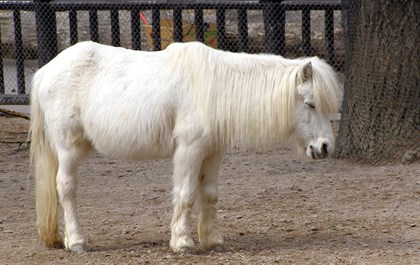This article has appeared previously with Equestrian Life. To see what’s in our latest digital issue, click here.
Ponies are often suseptible to Cushing’s disease.
Ask the vet: Cushing’s disease
Q: Cushing’s disease − can you explain it, can it be prevented and how can it be managed? – Jack, Belmere, Queensland
A: CUSHING’S DISEASE IS the commonly used term for the disorder scientifically known as Pituitary pars intermedia dysfunction (PPID). It has become a relatively common endocrine (hormonal) disorder seen in older horses and ponies (15 years +) although it is reported occasionally in younger horses. Advancing technology and diagnostics in the equine field have resulted in our horses living longer, healthier lives and we are now dealing with more illnesses specific to aged horses than we once did, with Cushing’s disease one of the major culprits.
Whereas Cushing’s was once attributed to a tumour in the part of the brain known as the pituitary, it is now thought the condition is due to degeneration of some types of neurons in the brain that control the activity of a particular part of the pituitary gland. This part, the “Pituitary pars intermedia (PPI)”, produces a particular protein, which ultimately becomes a hormone responsible for many functions in the body. In normal individuals the amount of hormone produced by the PPI is controlled by neurons that secrete a product called dopamine. For reasons as yet unknown, there is a loss of these dopaminergic neurons, so the PPI continues to produce excessive amounts of hormone resulting in the clinical signs we commonly see with PPID. The most commonly associated clinical sign seen with PPID is a long, hairy coat that doesn’t shed or sheds poorly. Other clinical signs include weight loss, muscle wastage, abnormal fat deposition around the body (often as large fat lumps above the eyes), excessive drinking and urination, lethargy, reduced resistance to infections and, unfortunately, laminitis. Often horses are not diagnosed with PPID until the vet is called to see them for a secondary infection such as sinusitis, hoof abscess, or a skin condition, and it is discovered that the underlying problem is PPID. It is important in these cases that the underlying PPID problem is treated, otherwise many of these secondary infections will keep recurring. Why some horses or ponies develop Cushing’s disease and others don’t is unknown, therefore it is not possible yet to prevent your pony from developing it if he is destined to get it.
There are a number of ways to diagnose PPID and most involve blood testing. One of the more common tests involves taking blood and looking for a hormone called ACTH. Another test involves injecting the animal with a corticosteroid called dexamethasone, then accessing the horse’s cortisol response to it with a second blood test. Results of these tests are not always black and white, as levels of ACTH and cortisol responses can differ depending on the time of year (higher in autumn) and the stage of the disease. Some horses may have normal levels even though they are showing clinical signs of the disease. Some veterinarians will also diagnose the condition based on the history and the clinical signs the horse is displaying. They will then do what is known as a treatment trial, whereby the horse is given medication over a period of time before the vet will ascertain if there has been a positive response to the medicine in order to confirm a diagnosis of PPID.
A lot of research has been done into PPID resulting in a number of medications and management protocols that can greatly improve the quality and longevity of life of the Cushingoid horse or pony. The most common medical treatment on the market in Australia is a drug called pergolide (pergolide mesylate). This medication acts similarly to dopamine and so reduces the amount of peptides/protein produced by the PPI. The drug is usually given as a daily liquid and most horses tolerate it well. It is usually necessary to increase the dose over time as the disease progresses but horses and ponies often do very well for years once the appropriate dose is given.
Not all horses diagnosed with PPID will need to be treated medically; it will depend upon what clinical signs the horse is displaying. Some horses may only show the long hair coat and may be managed with clipping their coats twice a year instead of by daily medication. However, it is advisable that these horses are monitored once or twice a year with blood tests to determine if there has been significant deterioration in their condition so that they can commence medical therapy before more severe signs develop.
Similarly it can be beneficial to monitor ACTH levels in patients receiving pergolide as an indicator of how successful the treatment is and whether it is necessary to increase the dose if the ACTH levels begin to rise.
As mentioned, ponies and horses with PPID are more susceptible to diseases, including worm infestations, than their healthier counterparts and therefore they should be monitored regularly for any signs of impending health problems. Good management of diet, parasite control, teeth and foot care are all essential to achieving a good quality of life in horses with PPID.
READ THE LATEST NEWS ARTICLES HERE









